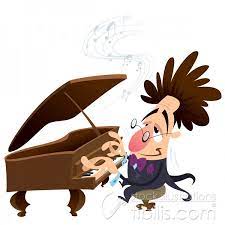Let's say our young piano student has sailed through one of the many available method books series. He/she is equipped with basic reading skills and has experience in various keys up to, perhaps, one or two flats or sharps. There will no doubt have been some introduction to basic technical issues such as hand position, posture and the correct use of the thumb in an octave scale. They will have learned to open the hand beyond the five-finger position and mastered Alberti figures. We've closed the back cover of the final volume. Now what? If there were a choice between mind-numbing exercises of the sort written by Carl Czerny or musical morsels by, say, Mozart, whom would you choose? Oh, dear. I think I may have revealed my predilection.
In the first exercise of the (in)famous Op. 740, Czerny gives us repeated five-finger patterns, first in the left hand, then in the right. (I would be glad to know if any of you readers have come across such a passage in a piece of music.) I suppose this
is about endurance? Endurance equals strength training, so we don't need it. Is it about evenness? We know how to shape passages over and under to accommodate the different finger lengths, so once applied and worked-in, all this repetition is a waste of time. (Select the iDemos tab above for a shaping demonstration.) The composer tells us this is about the "action of the fingers, the quiet hand." In other words, he separates the fingers from the hand. Ow! I would rather spend my time on something like this (Mozart. Nine Pieces for Piano KV Anh. 270):

or:
Yes, there is more to coordinate between the hands, but the effort will result in a useable piece of music. And there are many more such examples to be found for students at different levels.
Finally, I think it's misguided to think in terms of teaching particular techniques set apart from music: now we'll do five-finger patterns, scale passages, arpeggio passages, two-note slurs—you name it. These techniques can be taught within the context of the music when they come up. Then we extract the new concept from the movement and make mini-etudes of them. How can we make music of we're enduring something?
























